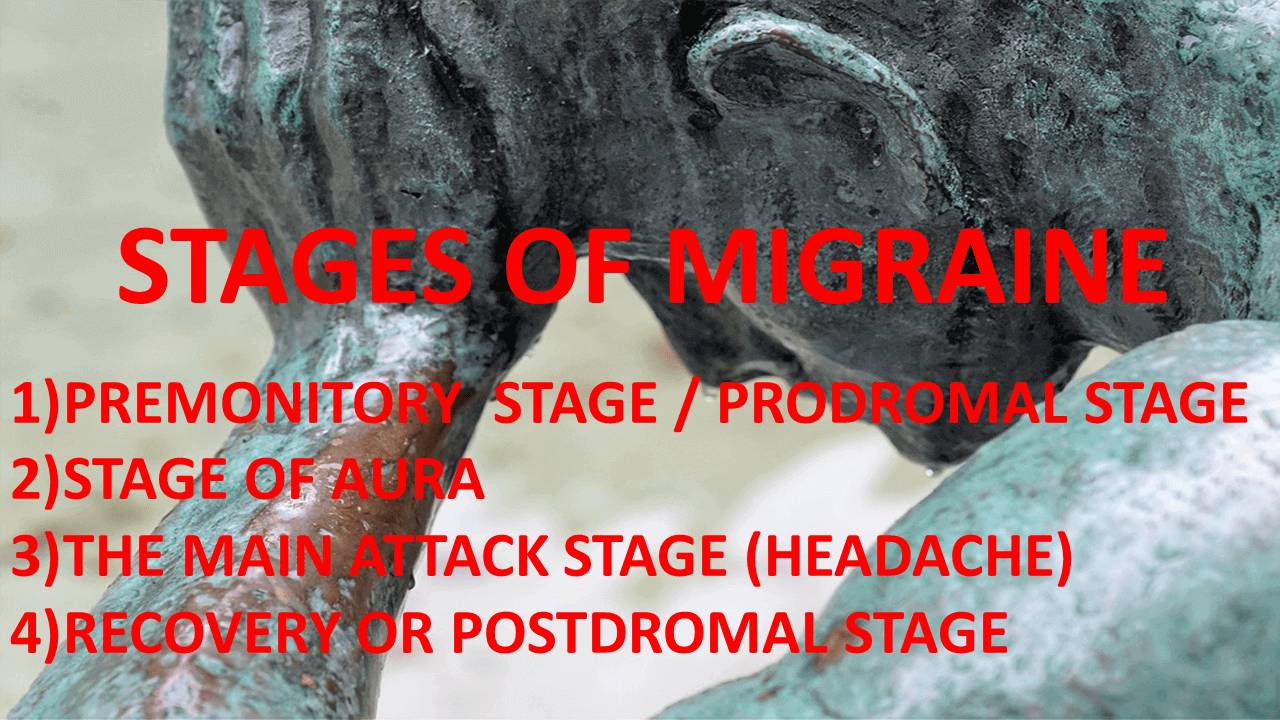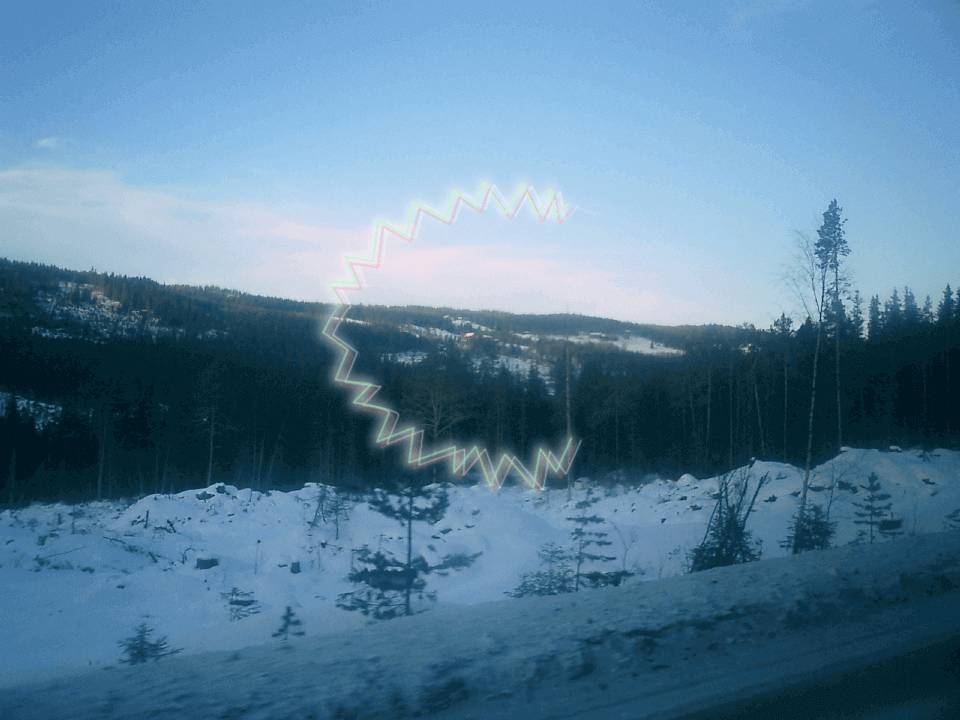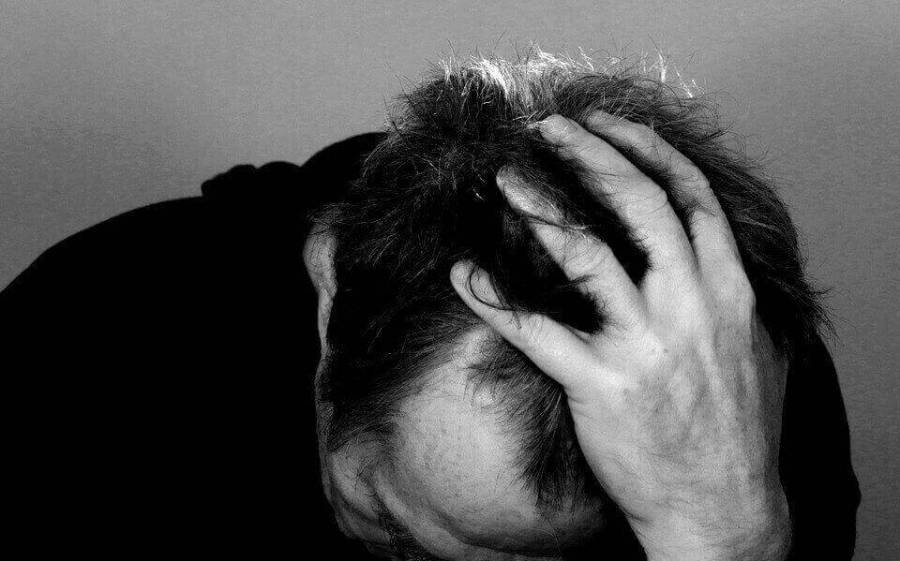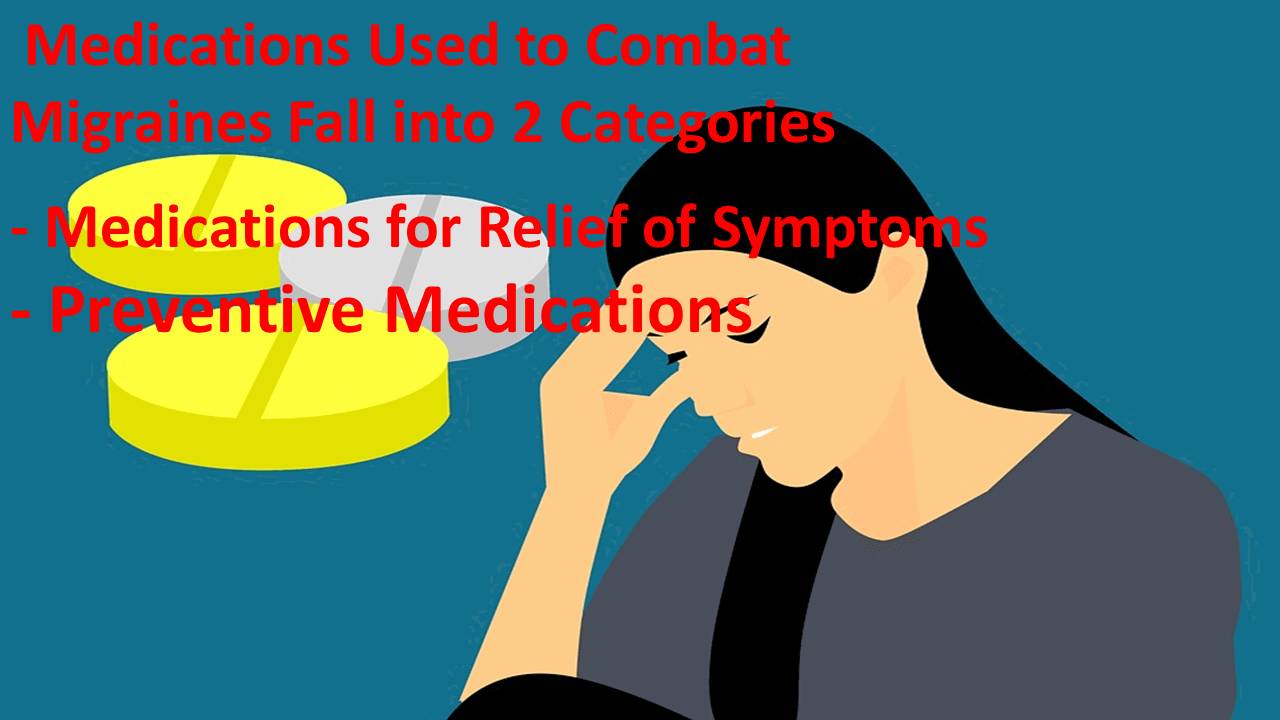A patient with an intense throbbing headache, felt mainly on one side of the head, which may be associated with dizziness, nausea, vision of flashing lights or blind spots presenting to the emergency room of a hospital always gives rise to a provisional (most likely) diagnosis of Migraine in the mind of emergency care physician present at the scene, but the scenario is not so simple for the 1 billion people worldwide (including 39 million in the USA) who struggle with migraine as an integral part of life.

Unfortunately, Migraine, which happens to be the 3rd most prevalent illness & the 6th most disabling, in the entire world is still not very well understood by many people. For more than 14% of people of the world (including children), their level of difficulties may be underestimated and struggle with migraine, misunderstood by the vast majority of those who are not affected. A brief discussion of a few salient points of the disease would be certainly beneficial in this situation.
Migraine definition in most medical texts is described as a type of headache, which is associated with other symptoms like – nausea, vomiting, sensitivity to light, disturbance of vision/sound/smell and is caused due to abnormal brain activity. It is believed that the word Migraine, is derived from the word “hemicrania” (first used by Galenus of Pergamon) meaning pain on one side of the head. Although the description of the disease is also found in much older texts like – Ebers Papyrus, which was written in ancient Egypt around 1500 BC and happens to be one of the oldest preserved medical documents.
Since its earliest description, many notable healers & scholars of the ancient world have added to the knowledge about the different facets of this disease. Hippocrates had described even as early as 400 BC, the aura consisting of flashing lights or blurred vision, that occurred before an attack of migraine. Avicenna, the famous Persian Muslim scholar, who lived in the 11th century, and considered by some as the father of modern medicine, in his “The Canon of Medicine” – a medical encyclopedia, described the factors that make the pain worse during a migraine attack.
As has been said before, during migraine attacks, a person suffers from severe throbbing headaches, nausea, vomiting with sensory disturbances. However, the practical manifestations of migraine symptoms are multiple and can cause different effects in different people. Not all migraine symptoms may be present in every individual, hence no attempt to self-diagnose a problem should be undertaken in any case, without medical consultation first.
A typical migraine attack of headache can last anywhere between 4 to 72 hours. However, most people suffering from migraine attacks have the ability to recognize and can make out different stages of migraine. These stages are interconnected in a way that one stage can progress to another stage.

A person suffering from migraine attacks may manifest one or all of the stages of a migraine, and sometimes a combination of stages, which may vary from one migraine attack to another. Quite often, some patients may skip a certain stage during some of their attacks. It is important for a patient suffering from migraine, to be able to differentiate between the different stages of migraine. This has a practical utility, as taking migraine medication before symptoms have fully developed can help in taking steps, which may prevent the migraine attack from progressing.
In children, the attacks are much shorter compared to adults and hence the different stages are not always possible to differentiate. However, in adults four well-defined stages of a migraine attack have been identified, with a different presentation of migraine symptoms. These 4 stages, seen in adults are-
Seen in 60% to 80% of patients suffering from recurring migraine, these give the patient a warning sign about the unpleasant impending migraine episode. Lasting from 1 to 24 hours (sometimes even more), the symptoms most commonly seen in this stage of migraine are – tiredness, irritation or depression (rarely, sometimes euphoria), nausea or change in bowel habits.
Other less frequent symptoms which can also be seen in the prodrome stage of migraine are – muscle pain or stiffness, confusion and decrease in concentrating ability, loss of appetite or food cravings (especially for sweets), feeling excessively cold, yawning (& sleepiness), vivid dreams, increased sensitivity to smell, light & sound and increased need to urinate.

It is believed that the premonitory stage of migraine, is caused due to actions of neurotransmitters – serotonin and dopamine (which regulate pain and mood). Hypothalamus - a part of the brain, which has control over hormones of the body, maybe also is involved in the action.
As the prodromal stage of migraine, herald a severe migraine attack, it is important to pay attention to it. Avoiding migraine triggers, relaxing and staying hydrated is important as is taking medications to minimize the severity of migraine attack. Explaining the real situation to near and dear ones, and asking for support can help in dealing with an impending migraine attack much more effectively.
The stage which usually follows the premonitory stage of migraine is the stage of migraine aura. The word “Aura” in migraine context, describes the neurological signs and symptoms that appear just before or during the initial period of migraine headaches. Approximately 10% to 30% of patients suffering from migraine, experience aura with the frequency of once a year to several times in a year.
While in the premonitory stage a patient shows behavioral symptoms which are generalized, the migraine aura has localized neurological features, like – tingling & numbness in one side of the body or vision changes on both eyes. The Electroencephalogram (EEG) in migraine aura, shows decreased nerve activity, that sweeps across the outer layer of the brain. The duration of stage of migraine aura is also much less compared to the premonitory stage, as being of less than 60 minutes. In patients of migraine without aura, this stage is absent.
Migraine Visual Aura/ Migraine Vision Changes – This is the most common type of aura seen in patients suffering from migraine and in many cases no other sensory or motor effects are seen. Migraine visual aura produced in the aura stage of migraine is one of the most important hallmarks of the disease. The migraine vision changes observed can be of many different types, like – zigzag lines, sparkles/stars, flashing lights before the eyes, tunnel vision, blurring of vision, colored spots or blind spots in the field of vision or even temporary blindness.

Among the migraine visual aura, a particular vision disturbance merits special discussion and that is – Scintillating Scotoma. Of all the migraine vision changes, this has been perhaps been described in the greatest graphic detail. Here a person develops vision disturbance in the center of the field of vision, which appears to be altered due to constant flickering. This can cause serious hindrance in reading and driving. From the central altered area of vision, sometimes zigzagging lines (which may be in black or white, or in color) also appears to spread out.
Although migraine visual aura is the most common type of aura seen in migraine, it is not the only type. Other symptoms may also be seen. Feelings of pinprick in arms and the legs, presence of tingling or numbness, weakness on one side of the body, vertigo or dizziness; are some other features. Sometimes memory changes, decreased concentration, confusion and fear can also occur with speech or hearing involvement. Auditory hallucinations or delusions can also occur in some cases.
The aura of migraine occurs before the onset of headache in adults, however, in the children, this may occur at the same time as headache itself. In some rare cases, the aura can last more than 60 minutes and occur after the headache has already started.
This is the stage which is the most well-known among ordinary people. The pain although starts gradually (usually beginning above the eyes) and is increased by physical activity or movement. The throbbing headache (some patients also describe the pain as being of pressing in nature, or like drilling, or stabbing with an ice pick on the head, or of burning nature) usually occurs on one side of the head. The pain is described as mild by some and severe or unbearable by others. Sometimes pain can also occur on both sides of the head (especially in a migraine attack without aura) or all over the head.

The pain duration may be variable and usually lasts between 4 hours to 72 hours. The person involved may become sensitive to sound, light and sometimes even smell. They may also suffer from nausea, vomiting, light-headedness & fainting. Nasal congestion, anxiety, depression, sleep impairment, neck pain, and stiffness can impair daily activities.
This is the last stage of migraine, which is also sometimes known by the unfortunate terminology of “migraine hangover”. This feeling of a hangover may take hours to days to disappear (usually 24 to 48 hours). As other stages, this stage too doesn’t occur in all patients & certainly not after every attack, even in the same individual.
The usual symptoms of this stage are usually the feelings, one would feel after a stressful experience – weakness, body pains, depression, difficulty in concentrating, confusion, dizziness, and sensitivity to light. Sometimes the symptoms of this last stage of migraine are quite often exactly opposite to what was seen at the beginning of an attack. A person who had lost his appetite at the beginning of attack would be very hungry & someone who may have felt lethargic would feel quite energetic.

One of the biggest problems, that patients of migraine face are the popular misconception in society, that all migraines are the same. However, there are different types of migraine and people with different migraine types would show different signs and symptoms of Migraine. Some of the major signs and symptoms of different types of migraine are discussed below for the benefit of our readers.
This is the most common type of migraine (previously known as common migraine) seen in the society, with 70% to 90% of people with migraine, presenting to health practitioners with complaints relating to migraine without aura. This type of migraine can last for a period between 4 hours to 72 hours, without satisfactory treatment. Features like – Headache, vomiting, diarrhea, and sensitivity to light or sound are usually present. The frequency is highly variable and may occur anytime between once a year to several times a week.
People suffering from migraine with aura, have the symptoms of a migraine without aura along with neurological symptoms, which manifests as an aura of migraine, described previously. The neurological symptoms of migraine, occur before a headache, although in some cases the headache may be absent. Frequency of attack of migraine with aura is variable and can occur anywhere between once a year to several times in a year, with 10% to 30% of patients experiencing this type of migraine. Migraine with aura is also sometimes known as – Classical migraine, Ophthalmic migraine or Complicated migraine.

This type of migraine with aura can be again divided into two different subtypes, they are –
A) Migraine with Brainstem Aura
Previously known as “Basilar type Migraine”(as this type of migraine originates in brainstem), this is a rare type of migraine with aura, and presents with visual problems in both eyes (double vision, temporary blindness etc), sensitivity to light and sound, speaking & hearing problems, ringing in the ears, vertigo & loss of balance, nausea & vomiting, tingling sensation in hands & the feet and even loss of consciousness.
B) Hemiplegic Migraine
In this type of migraine with aura, there is a temporary weakness on one side of the body during the attack of a migraine. This usually involves the face, arm, and leg of one side and may be associated with numbness or pinprick sensation. Vision problems, speech difficulties or confusion may be present. These symptoms may be confused with a stroke. This weakness usually goes away within 24 hours, but sometimes may last longer. The headache of migraine usually follows the weakness, but rarely may occur before too or may be absent.
This variety of migraine can again be divided into 2 types –
1) Familial hemiplegic migraine – where 2 or more people of a family suffering from migraine, develop weakness of one side of the body during their migraine attacks. This type of migraine is seen in almost 50% of children with parents suffering from hemiplegic migraine.
2) Sporadic hemiplegic migraine – a patient who manifests symptoms of hemiplegic migraine but without any familial connection is described as a patient of sporadic hemiplegic migraine.
It is a type of ocular migraine, that is different from other cases of migraine with aura in that, the visual problems like flashing of lights or brief attack of blindness occurs only in one eye in contrast to the other types of migraine where the vision of both eyes are affected. Although this variety of ocular migraine may be scary to the patient, it does not have any long-term ill effects and the eyesight becomes normal after the attack.
The vision loss (partial or total), in one eye in retinal migraine, lasts for 10 for 20 minutes before improvement gradually starts. In most cases, it is the same eye that is affected in every attack. Sometimes flashes of light may also be seen. The main cause of this variety of ocular migraine is decreased blood flow to the eye because of the sudden constriction of the blood vessels. Later on, once the blood vessels begin to relax, the blood flow is gradually restored and the sight returns.
This retinal migraine is mostly seen in individuals with a family history of migraine or are over 40 years in age. Females have more tendency than males in developing a retinal migraine. Increased association with other diseases like – epilepsy, lupus, sickle cell disease and hardening of arteries is also observed.
Menstrual migraine is a rare variety of migraine, which affects less than 10% of women. The onset of attacks occurs at a time interval anywhere between, just 2 days before the onset of a period to within the first 3 days of a period and symptoms are similar to migraine without aura. This is associated with falling levels of estrogen. Birth control pill has been found in some women to make menstrual migraine worse. This has been contributed to the fall of estrogen level, that occurs when the woman concerned takes placebo pills or nothing at all during the week of her period. Changing the composition of the pill can help in such a case of menstrual migraine.

Chronic migraine is a rare condition that affects less than 1% of the population but has debilitating effects for the person concerned. In the condition of chronic migraine, the patients suffering from the condition get headaches very frequently – 15 or more headache days per month.
According to International Headache Society, this condition is defined as “headache occurring on 15 or more days per month for more than 3 months, in which at least headaches on 8 days (per month) has features of migraine headaches.” The diagnosis of this condition can be made only after studying the recorded observations of a daily headache diary (with details of all episodes of migraine), which the patient is advised to maintain.
According to studies conducted, approximately 2.5% of people suffering from episodic migraine will transition to chronic migraine each year. This transition to chronic migraine is associated with certain well-identified risk factors like – Anxiety, depression, asthma, obesity, other painful conditions, stress, head injury, snoring and medication overuse.
Many patients with chronic migraine are unable to lead a productive life with the condition, because of being incapacitated for over half of a month. Medicinal use, lifestyle changes, avoiding migraine triggers form an important aspect of treatment.
Abdominal migraine is believed to be a type of migraine, that is more common in children (most common in children between 5 years to 9 years) than in adults. The characteristic feature of this condition is a pain in the center of the abdomen that can be associated with nausea, vomiting, and loss of appetite. Some 2/3rd of children suffering from abdominal migraine, also complain of typical migraine headache at the same time as the pain of abdominal migraine. During early adulthood, these migraine headaches may replace the abdominal migraine episodes. Some of the children also grow out of their abdominal migraine complaints by late adolescence.

The duration of the symptoms is variable, lasting from 2 hours to 72 hours, with sleep bringing relief from symptoms of abdominal migraine. The patients are symptom-free between the attacks. The cause of abdominal migraine is not yet properly understood. Most children suffering from abdominal migraine have some kind of family history of migraine. Besides this, neurologic and endocrinologic changes, the role of trigger factors has been also postulated as being responsible for abdominal migraine.
In spite of extensive research, migraine headache causes have not been fully understood, though many associated factors like – genetics and environmental issues have been identified. Abnormal brain activity temporarily affecting nerve signals, chemicals, blood vessels in the brain is believed to play an important role. Also, imbalance of neurochemicals like serotonin has also been noted. It is believed that neurochemicals irritate blood vessels present on the surface of the brain, which causes the blood vessels to get swollen and stimulate the pain response. Some other associated factors observed are -
1) Family History - Scientific studies have clearly proved that Migraine has shown a familial predisposition. However, migraine is a complex genetic disorder in the sense, that several different genes come together along with other external factors to cause the disease manifestations.
2) Age - Migraine is seen in all age groups, though presentation during teen years is more frequent. It gradually increases in severity until the 30s, and afterward, the condition usually improves.
3) Sexual Predisposition – The incidence of migraine in females is 3 times higher than males.
4) Hormonal Changes – As has been mentioned before that in some women suffering from migraine, there has been clear evidence of superimposition of symptoms of migraine on the period of a woman. The main reason given to explain the association of activity of migraine on period is because of a drop in estrogen levels, that occur just before a woman’s menstrual cycle begins. Sometimes hormonal medications like oral contraceptives & hormone replacement therapy can also make migraines worse.

The symptoms of migraine in pregnancy, another condition where hormonal changes take place, are variable. A woman suffering from migraine can have variable changes observed during migraine in pregnancy. In the majority of the cases, the intensity and frequency of the headaches decrease during pregnancy, due to rising estrogen level. However, in some cases, the symptoms of migraine in pregnancy may actually become worse than before.
Triggers of Migraine or Migraine Triggers in this context means all those external factors or stimulus that result in migraine headaches and other associated symptoms. A person who is known to suffer from migraine problem, after being exposed to such a trigger can develop a migraine attack, within the next 6 to 8 hours. It is not always easy to identify migraine trigger and the fact that even the triggers of migraine responsible for causing an attack, may not do so on every occasion, further complicates the situation & sometimes gives rise to wrong identification of triggers of migraine.
Triggers of migraine for different people are different and maintaining a detailed diary describing the time, food & medications taken, other activities indulged in, environmental surroundings, timing, a person’s location and other details of migraine headaches will certainly help in identifying the migraine triggers. Some of the common triggers of migraine are –
1) Change of a Daily Schedule – In many people change of daily routine can lead to an attack of migraine, including migraine headache. These can be even simple changes like – undertaking a long journey or changing of sleep pattern, deviating from standard life on the weekends.
2) Stressful Activities - Migraine headaches and other symptoms are clearly related to stressful events that these patients may encounter. Tension, shock, anxiety or even any other form of excitement can lead to attacks of migraine.
3) Sleep Changes - Too much or too little sleep, or even alteration of sleep timings can serve as a migraine trigger.
4) Migraine Food Triggers - Migraine food triggers are all those foods which can lead to an attack of migraine when eaten. A definite idea of migraine food triggers would help a person to have a better idea of migraine foods to avoid. Migraine food triggers are known to affect and cause problems in 10% of the population suffering from the disease.

Salty and processed food (including soft cheese), food additives (aspartame & monosodium glutamate), coffee, red wine (and other alcohols), sugary snacks, missing meals or irregular dietary habits, drinking less water & resulting dehydration, are some common migraine food triggers. A list of migraine foods to be avoided should be made by the patient suffering from migraine headaches and their avoidance can lead to a much better life.
5) Environmental Factors – Strong light (including sun glare), loud sounds and strong smells are commonly recognized as triggers of migraine by many patients suffering from the disease. Some also complain that high altitude, high humidity & weather changes also lead to a migraine attack. One of the hazards of modern lifestyle is working with computers, which can lead to muscle tension in head, neck & shoulders; which can be one of the important migraine triggers in the modern world. Sitting comfortably and taking breaks can help in many cases.
6) Physical Activity – Intense physical activities like sudden vigorous exercise for people not accustomed to it can be an important trigger factor for migraine. However, regular exercises which are built up gently has been seen to prevent attacks in many situations.
7) Medicines and Drugs – Some hormonal contraceptive pills & blood vessel dilators have been seen to increase the possibility of migraine attacks. Using drugs like cocaine and cannabis can make migraine worse.
8) Physical Conditions of the Body – Sometimes head injury, increased muscle tension in neck and shoulder muscles, repeated coughing, teeth grinding or being overweight/underweight can also lead to migraine headaches and other manifestations.
At the outset, it has to be mentioned that finding a total migraine cure has not been possible up to now, but many different methods of migraine treatment are certainly available which allow patients to lead a productive life. All patients suspecting to be suffering from migraine should consult a neurologist, who based on medical history, signs, symptoms, and examination can diagnose migraine easily. Sometimes a need for CT scan or MRI may arise, to rule out other similar conditions.
The treatment of migraine uses multiple treatment options and migraine treatment may vary from person to person depending on the severity and complaints involved. The treatment of migraine should always be done under medical supervision as the medicines used for the condition have their own side effects. Some of the most common modalities of treatment used are –
The migraine headache is perhaps one of the most debilitating features of the disease, which demands immediate pain relief. For this purpose, analgesics (painkillers) are used. The most common migraine medicines used for this purpose are – Aspirin, Diclofenac, Ibuprofen, and Paracetamol. Ergotamine group of drugs are used for the same purpose but can have dangerous side effects. Similarly, narcotic opioid medications can also be used, when other treatments do not work, but can be highly addictive.
Also known as anti-emetics or anti-sickness drugs, they decrease nausea and vomiting associated with migraine attacks. These medications should be taken before or at the same time as pain killers. The common medicines used in this group are – Domperidone, Metoclopramide, Chlorpromazine, and Prochlorperazine.
Medicines used for this purpose, belong to Triptans group of medicines. Sumatriptan, Almotriptan, and Rizatriptan are typical examples of this group of migraine medicines. They block pain pathways in the brain and also narrow the blood vessels in the head thus providing relief in migraine.

Also called as preventive medicines for migraine, these are only advised after a thorough medical examination in a patient having frequent attacks of severe long-lasting migraine headaches. One of the drawbacks of this kind of treatment is that it can take up to 3 months for the preventive effects of the medicines to be observed. Patience is needed to wait during this duration.
Different categories of medications are advised for the purpose. Some of these are –
1) Beta-Blockers – Medicines in this group include Propranolol, Metoprolol, Atenolol, etc. These medicines should be avoided in people with asthma. Generally, they are used to treat high blood pressure but also works in migraine. The property of these group of medicines, which helps in migraine are – they relax the blood vessels and reduce the activity of brain cells involved in migraine.
2) Anticonvulsant Medications – These medications are classically used to decrease or prevent seizures. In migraine, they decrease the ability of the nerves to transmit pain signals to the brain. Sodium valproate, Topiramate are drugs of this category used for the prevention of migraine headaches.
3) Antidepressant Medications – These medications classically used for the prevention and treatment of depression are also effective in preventing migraine. Amitriptyline and Nortriptyline are generally advised.
4) Calcium Channel Blockers – As the name suggest they decrease the calcium entry into nerve cells making them less responsive. The narrowing of the blood vessels is also prevented. Verapamil and Diltiazem are commonly used for this purpose.
5) Migraine Botox Injections – Migraine Botox Injections are advised for adults suffering from chronic migraine. Injection of onabotulinum toxin type A (Botox) every 12 weeks in a small amount can prevent migraine attacks in some adults. However, at least 2 treatment sessions are needed to assess the response to treatment.
6) Calcitonin Gene Related Peptide (CGRP) Monoclonal Antibodies – These are the latest addition to the group of preventive medicines, which has been specially developed for the treatment of migraine (all other methods used for preventing migraine headaches were primarily designed for other roles).
Calcitonin gene related peptide (CGRP) is a molecule (neuropeptide) which plays an important role in causing migraine pain. Calcitonin gene related peptide monoclonal antibodies, functions as CGRP inhibitors, that block the effect of CGRP.

4 Different CGRP monoclonal antibody compounds are advised for migraine treatment. They are – Erenumab, Fremanezumab, Galcanezumab, and Eptinezumab; which are used to prevent migraine attacks. The first 3 are given in a monthly dose by single subcutaneous injection and is approved by the FDA for use in migraine. Eptinezumab is to be given intravenously once every 3 months (but is yet pending FDA approval).
Migraine is a complicated condition with varied presentations and different approaches to treatment depending on the patient concerned. Some finer details of symptoms may vary from one patient to another. Similarly, the treatment plan advised for one person may not work for another. It is difficult to predict beforehand how a patient would respond to treatment. Different approaches to treatment may be needed, till the neurologist would be able to come up with a treatment that would be best suited for a particular patient. Unfortunately, this can sometimes take time. An observant patient maintaining an accurate diary, with detailed information regarding the migraine attacks, can help the doctor a lot.
(Disclaimer – This article is just for raising awareness regarding the migraine problem present in society. It is not a substitute for a direct medical consultation for patients who need it. All decisions regarding any health disorder, including migraine; should be only taken after examination by a qualified doctor and treatment should be only commenced under his/her direct supervision.)